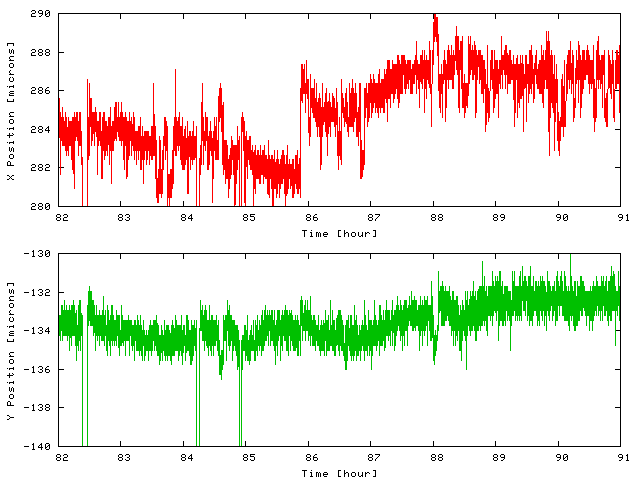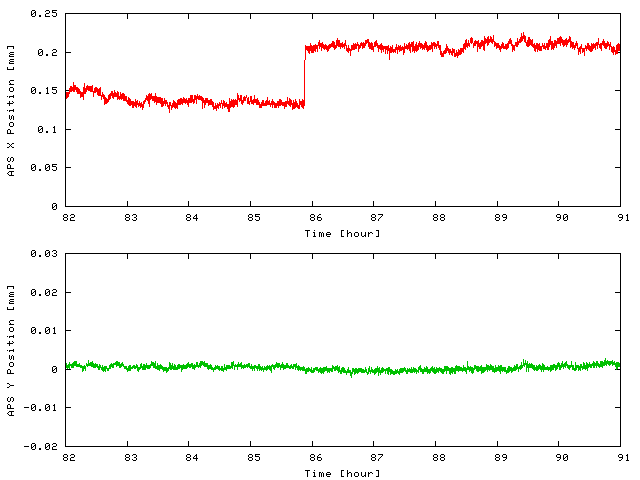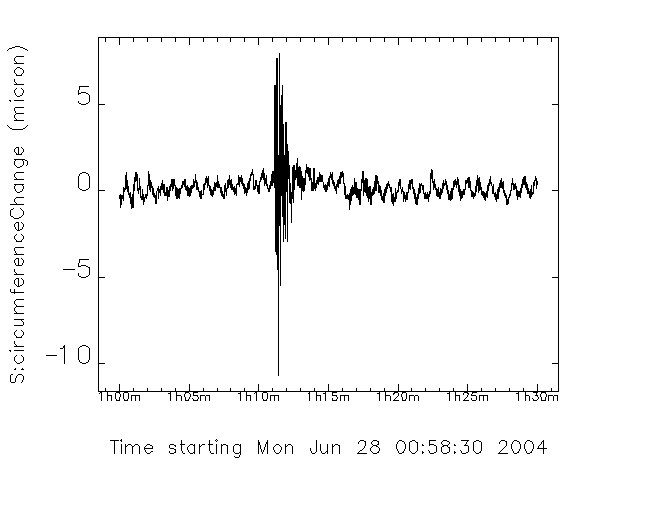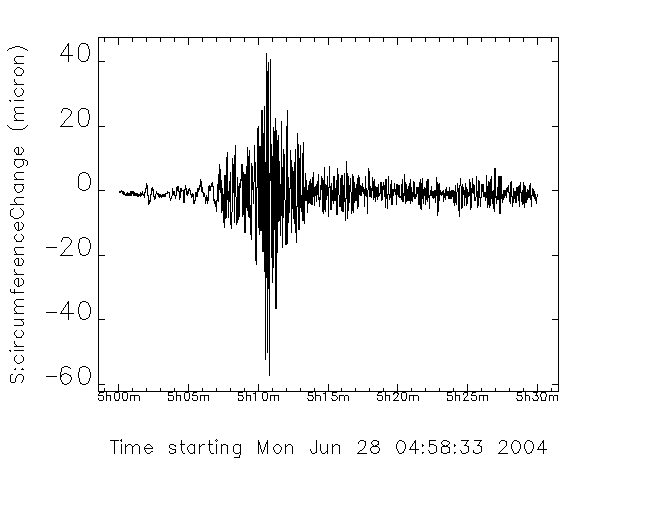Earthquakes at the APS
...Well, not epicentered at the APS. But the effects were felt
here.
The Advanced Photon Source is a very complex machine, and many things
need to be measured very accurately. Most of these things are,
directly or indirectly, bolted to the ground. So what happens when
the ground moves?
At 1:11 am on Monday, June 28, 2004, an earthquake of 4.2 magnitude and
5 km deep occurred near Ottawa, IL, a town 70 miles west of Chicago.
It woke up my wife, who thought she was having a bad dream coupled
with vigorous kicking by the baby (two months till the due date!).
I was at work running an experiment and didn't notice it.
Well, if I did notice it, I must have thought that I was getting
woozy from lack of sleep. Fortuitously, Eric Dufresne's
"time-series" program had been running all weekend. This program
records various measurements such as x-ray intensity, pressure of liquid
nitrogen in the cryocooler, etc. It also records the output of
two Beam Position Monitors (BPMs), so I asked him to plot out a few
hours worth of measurements. Here is what we found:


The plots on the left are from the BPM in the experimental hutch, about
70 m from the accelerator. The APS's X-ray BPM is shown on the
right, measured at 26.5 m from the accelerator. Time zero is 11:19
am, June 24, 2004, when the time-series program began logging.
The earthquake occured, obviously, just before hour 86. In
both plots there is a sizable horizontal shift to the beam position.
Apparently, our beamline got pushed sideways by 5 microns
(relative to the accelerator).
Did you know that earthquakes get labeled? It's not like
hurricanes which have peoples' names, but the Ottawa quake has the event
ID "uskgag." Certainly doesn't roll off the tongue like "Hurricane
Lazarus."
The beamline was not the only thing affected by this earthquake.
The accelerator also noticed the earthquake, but it was just some
transient shaking which did not apparently result in a net change.

The measurement shown here is the change in circumference of the APS
storage ring (the ring in which the x ray-producing electrons
circulate). Note that the accelerator physicists are measuring
changes on a micron scale to an object which is 1.1 kilometers (0.68
miles) in circumference. Glenn Decker pointed out that the Ottawa
earthquake was not the only one that morning: a few hours later there
was a 6.8-magnitude quake off the southeast coast of Alaska. That
led to an even greater shaking of the accelerator:

It still seems amazing to me that the APS can detect an earthquake in
Alaska. But this is nothing compared to a 7.9-magnitude earthquake
which occurred in central Alaska on November 3, 2002; that quake caused
the electron beam to veer 2 mm off-course, which tripped an interlock
and turned off the beam.
As seen in the top two figures, our beamline did not notice beam
movement due to the Alaska quake. Relatively speaking, our
beamline moved along with the accelerator; Glenn suggested this quake
had a longer period and wavelenth.
Don Walko
Last updated July 8, 2004



